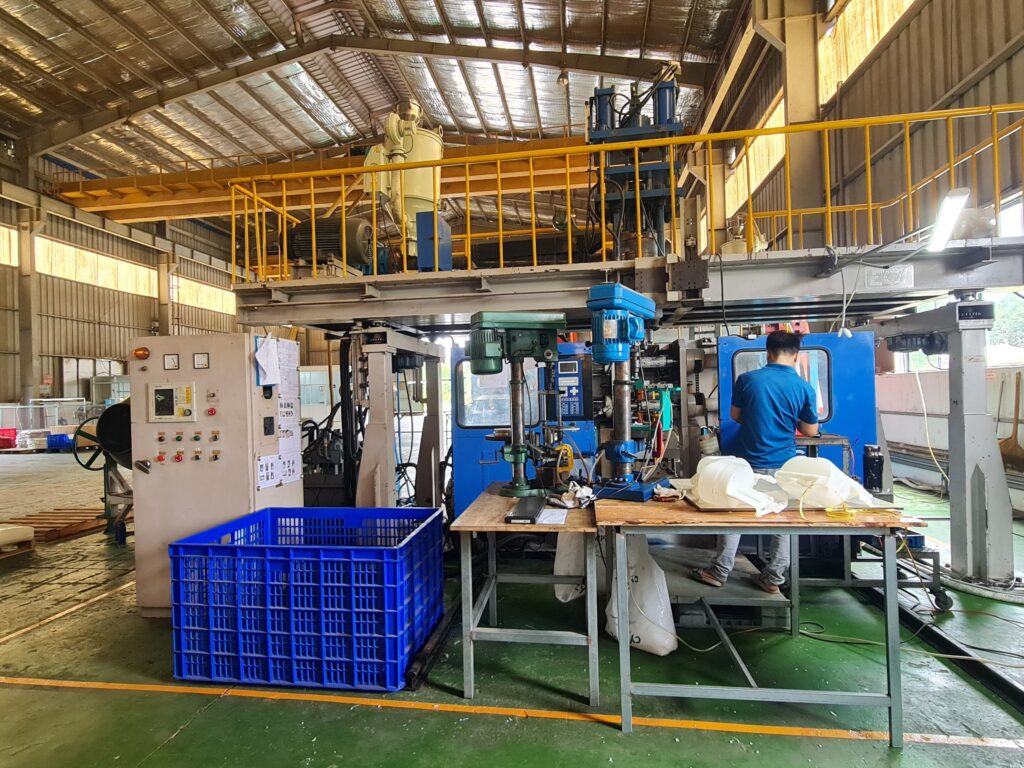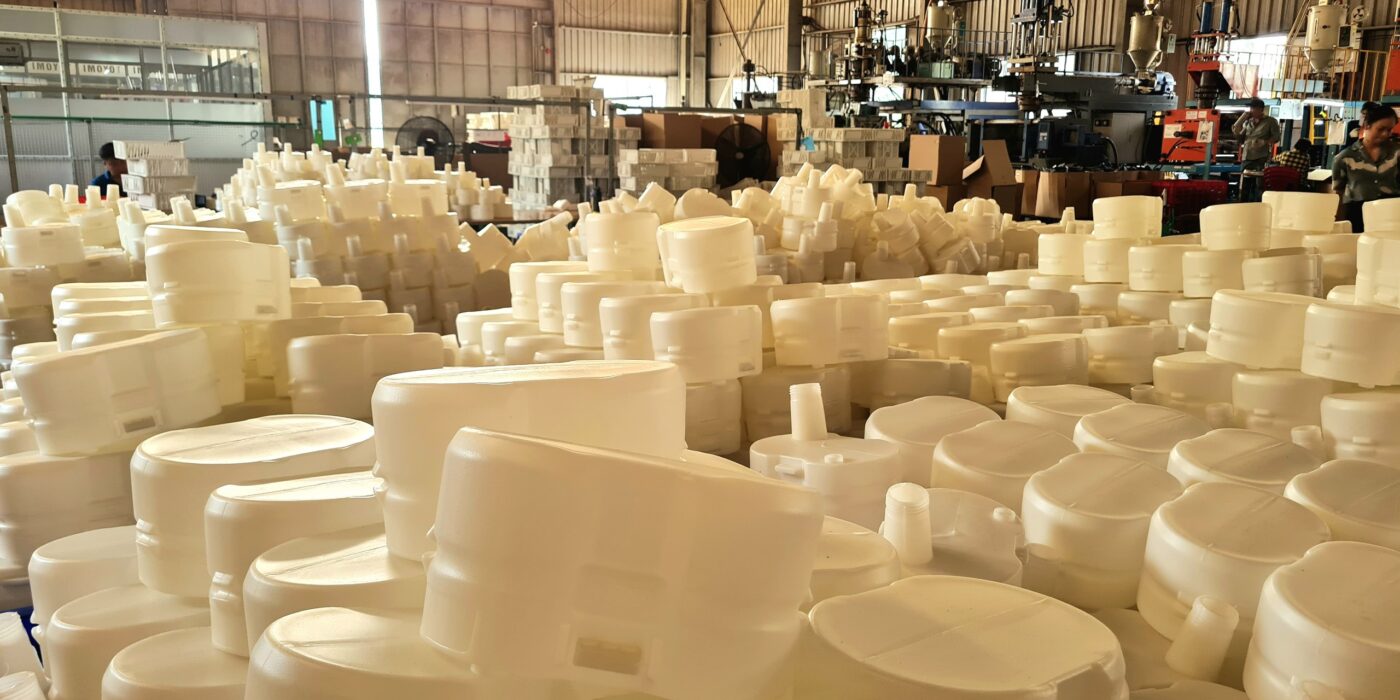Plastic is one of the common materials used to manufacture everyday consumer products as well as an important input to many industries. With the development of science and technology, plastic products are increasingly diversified, and are used to replace many traditional materials such as iron and steel, glass, etc. As a result, the plastic industry is increasingly developing. develop and become one of the important sectors in the economy.
1. Overview of the plastic industry
In the world as well as in Vietnam, the plastic industry is still young compared to other long-standing industries such as mechanics, electricity – electronics, chemicals, textiles, etc., but there has been a strong development in the industry in recent years. The plastic industry in the period of 2010 – 2020, is one of the industries recording the highest growth in Vietnam with an annual growth rate of 16% – 18% (only after telecommunications and textiles). Within the industry the growth rate of some certain plastic products was nearly 100%/year.

With a fast development speed, the plastic industry is being considered as a dynamic industry in the Vietnamese economy. There are several reasons to explain why the growth rate of plastics products is very high. First, the market for plastics product is huge and very potential. Plastic products are used in all fields of life (e.g. for packaging materials, construction materials, production of household applicances, etc.). Second, Vietnam’s plastic industry is only at the very beginning of its development journey compared to the world.
2. Business situation of enterprises
The plastic industry is one of the relatively young industries of Vietnam but has a very fast development speed. So far, there have been more than 4,000 enterprises operating in this industry, of which more than 99% are private enterprises, concentrated mainly in the South of Viet Nam (accounting for more than 80% of the country’s plastic enterprises). This is the area where many industrial parks concentrating in processing industry producing plastic packaging products. Most of the plastic enterprises are SMEs. Of which, more than 90% of Vietnamese plastic enterprises are oursourced by foreign countries. None of these have been able to build their own brand.
The competitiveness of Vietnamese plastic enterprises in general is rather low due to their small production scale and limited technological capacity. Currently, Vietnamese plastic enterprises mainly use Chinese technology. Machinery, equipment and production lines imported from China account for more than 40%. However, recently many plastic enterprises have invested in more advanced technology from Korea and Japan to produce engineering plastic products, or German technology to produce construction plastic products.
3. Structure of plastic products and materials
The plastic products that Vietnam has more advantages to produce are plastic packaging, consumer products, construction products and a number of high-tech plastic products such as oil pipes, plastic components for automobile, machinery and computer manufacturing. But in general, Vietnamese plastic products are not diverse in terms of designs and types and there are not many products with high added value.
Regarding the structure of plastic products, they can be divided into the following main product groups: packaging plastic, household plastic, construction plastic and engineering plastic.
Table 1: Main groups of plastic products produced by Vietnam
| Product | Proportion | Technology
Main |
Original
main material? |
Product
primarily |
Main customers |
| Packaging plastic | 39% | Extrusion blown technology | PE, PP, PET | Thin film packaging, plastic bags, PET bottles | Food and beverage processing enterprises and retail and supermarket systems |
| Household plastic | 32% | Press- molding technology | PP, PS, ABS | Household items | Consumers |
| Construction plastic | 14% | Pressing and extrusion Technology | PE, PVC | Construction plastic pipe, building material plastic | Real estate and construction enterprises, Consumers |
| Engineering plastic | 9% | Injection molding technology | PVC, PP, PU | Types of accessories | Electronics, electricity, automobile and motorcycle enterprises |
Source: Compilation of VPAS . reports
Primary plastic materials are made from petroleum, coal and natural gas after the plasticization process. Plastic products can be formed from primary plastic materials or recycled plastic materials. Currently, Vietnam’s plastic industry is only self-sufficient about 15-35% of raw materials depending on the type of products. The rest are imported from China, Korea, Japan and the ASEAN region.
The reason that raw materials for the plastic industry in Vietnam are mainly imported is because the investment in the production of plastic materials often requires a lot of capital, including both initial investment capital and working capital during the operation. While the domestic demand for primary plastic materials grows by over 10%/year, the growth rate of supply is less than 3%/year.
In recent years, Vietnam has developed large petrochemical projects to provide raw materials for the plastic industry such as Binh Son, Nghi Son refinery and petrochemical projects, Phu My plastic and chemical project, TPC, Hung Nghiep Formosa, etc. However, primary plastic materials still only meet about 18% of the domestic demand.
4. Foreign investment in the plastic industry
Compared with many other industries, Viet Nam’s plastic industry is very potential for foreign investors. In the past years, Viet Nam’s plastic industry has witnessed a large wave of investment shifting from China to Vietnam. There are many reasons for this shift including cheaper labor costs compared to China, some new Chinese policies prohibiting the import of waste plastics affecting the plastic recycling activities of China’s enterprises. Chinese plastic products are subject to anti-dumping duties in some markets, including Europe.
In addition, Vietnam has signed many free trade agreements with many major partners, creating more opportunities for investment and export, attracting more foreign investors into Viet Nam’s plastic industry. Especially, investors from ASEAN (Thailand, Indonesia), Korea and Japan have invested and bought shares in Viet Nam’s big plastic companie. Currently, the number of domestic plastic enterprises accounts for about 85%, the remaining 15% are enterprises with foreign capital.
The participation of foreign investors in Vietnam’s market has significantly changed the face of this industry. On the one hand, the participation of foreign investors has made the investment market in this field more exciting, attracting capital and technology from abroad to help modernize the domestic plastic industry. On the other hand, 100% domestic plastic enterprises will have to compete with very strong foreign plastic enterprises, leading to the situation that many Vietnamese plastic enterprises have been sold to foreign countries, or exit from the market.
5. Import and export turnover of Vietnam’s plastic industry
For many years, the plastic industry has always been in a state of trade deficit, with export turnover much lower than import turnover. The trade deficit has increased from 7.3 billion USD in 2015 to 14.6 billion USD in 2020. There are many reasons for the trade deficit in the plastic industry. Firstly, currently, the supply of domestic plastic materials can only meet about 20% of the market demand, the remaining 80% of material damand in Vietnam must be imported from abroad. Secondly, a large part of imported plastic materials is used to produce products that are inputs from other industries such as electronics, automobiles – motorcycles, construction etc. but when exported, the value of these plastic components is not included in the export turnover of the plastic industry. Thirdly, the main products of the plastic industry are packaging products, household items and plastic pipes used for construction, which mainly serve the domestic market. The export of these products is negligible.
Table 2: Vietnam’s plastic export and import turnover over the years
Unit: Billion USD
| 2015 | 2016 | 2017 | 2018 | 2019 | 2020 | |
| Import | 9.9 | 10.9 | 13.3 | 15.3 | 15.5 | 19.6 |
| Export | 2.6 | 2.8 | 3.3 | 4.2 | 4.7 | 5 |
| Deficit | 7.3 | 8.1 | 10.0 | 11.1 | 10.8 | 14.6 |
Source: Compiled from ITC Trademap
+ Vietnam’s plastic import turnover
Vietnam’s plastic import turnover has nearly tripled from $5.4 billion in 2010 to 19.6 billion in 2020. The average import growth rate of the plastic industry in the period 2010-2019 is about 13 %.
In the structure of plastic imports in recent years, the import of plastic materials has accounted for more than half of the total import turnover of the plastic industry.
Table 3: Plastic import structure and value in the period 2015-2020
| Year | Material | Product | ||
| Value
(Billion USD) |
Proportion
(%) |
Value
(Billion USD) |
Proportion
(%) |
|
| 2015 | 6.0 | 60% | 4.0 | 40% |
| 2016 | 6.3 | 59% | 4.4 | 41% |
| 2017 | 7.3 | 58% | 5.4 | 42% |
| 2018 | 9.1 | sixty one% | 5.9 | 39% |
| 2019 | 9.0 | 58% | 6.5 | 42% |
| 2020 | 11.6 | 59% | 7.9 | 41% |
source: General Department of Customs
In 2020, the import turnover of plastic materials was about 11.6 billion USD, accounting for 59% of the total plastic import turnover. In which, imported primary plastic materials accounted for about 98% and plastic wastes accounted for 2%. The highest volumes of imported primary plastic materials are PP (HS 3901), PET (HS 3907) and PP (HS 3902).
For finished plastic products, the highest volumes of imported products in 2020 are plastic sheets, bars, films, and foils (semi-finished products – HS codes 3919, 3920, 3921), accounting for half of the total imported finished plastic products, the rest are packaging plastics (HS 3923), kitchen plastics (HS 3924), construction plastics (HS 3925) and some other finished plastics (HS 3926).
+ Vietnam’s plastic export turnover
Although the export value of Vietnam’s plastic products is not high compared to other key export products such as textiles, footwear, furniture, etc., its average export growth rate from 2010 to 2020 reached 16%. It is higher than the average import growth rate in the same period which reached 13%. In 2010, the total export turnover of plastic products was less than 1.4 billion USD, but it reached nearly 5 billion USD in 2020.
Table 4: Vietnam’s plastic exports over the years
| Five | Ingredient | Product | ||
| Value
(billion USD) |
Percentage % |
Value
(billion USD) |
Proportion
% |
|
| 2015 | 0.40 | 18% | 1.80 | 82% |
| 2016 | 0.36 | 16% | 1.86 | 84% |
| 2017 | 0.51 | 17% | 2.50 | 83% |
| 2018 | 0.97 | 24% | 3.04 | 76% |
| 2019 | 1.27 | 27% | 3.44 | seventy three% |
| 2020 | 1.35 | 27% | 3.65 | seventy three% |
Source: Compiled from ITC Trade map
In terms of export structure, Vietnam exports main products (finished products and semi-finished products). Before 2018, the proportion of exported materials accounted for less than 20% of Vietnam’s total plastic exports. But starting in 2018, the export proportion of plastic materials has increased and it accounted for over 20%, 24%, and 27% in 2018, in 2019, and in 2020 respectively.
Le Anh Tu
Department of Information, Library and Trade Promotion – VIOIT
